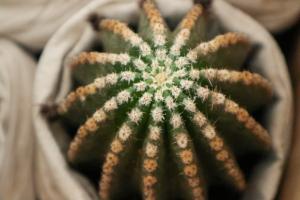Do You Need Pollinators for Indoor Tomato Plants?
Tomatoes are a beloved fruit that can be grown both indoors and outdoors. While outdoor tomato plants can rely on natural pollinators like bees and other insects to aid in the pollinating process, indoor plants do not have these same natural resources readily available. This often leads to the question – do you need pollinators for indoor tomato plants? The answer is more complicated than a simple yes or no.
The Role of Pollination in Tomato Plant Growth
Pollination is an essential part of any plant's life cycle, and tomatoes are no exception. The act of pollination occurs when pollen from the male reproductive part of the plant, called the anther, is transferred to the female reproductive part, known as the stigma. This process leads to the formation of seeds, which is crucial for the plant to reproduce and continue its life cycle.
When it comes to tomato plants, they are considered self-pollinators, which means that their flowers have both male and female reproductive parts. This allows the pollination process to occur naturally without the need for insects or other pollinators. However, there are times when tomato plants may require additional assistance to ensure proper pollination occurs.
The Importance of Pollinators for Indoor Tomato Plants
While indoor tomato plants don't have access to natural pollinators, they can still be pollinated by hand. This process involves transferring pollen from the anther to the stigma with a small brush or cotton swab. However, this can be a time-consuming process, and the results may not be as successful as natural pollination.
This is where the use of pollinators such as bumblebees, carpenter bees, or even small flies can be beneficial. By introducing these pollinators to your indoor tomato plants, you can increase the chances of successful pollination, leading to a better harvest and improved plant growth.
How to Attract Pollinators to Your Indoor Tomato Plants
If you decide to use pollinators for your indoor tomato plants, there are several things you can do to attract them to your plants. One method is to place a few flowers near your tomato plants, as this will provide an additional source of nectar for the pollinators to feed on.
Another option is to create a small opening in your indoor growing area, such as a window or vent. This will allow for natural airflow, which can help attract pollinators to your plants. You can also try using a small fan to simulate natural wind currents and further entice the pollinators to your plants.
Conclusion
While indoor tomato plants don't necessarily need pollinators to grow and produce fruit, the benefits of introducing them far outweigh any drawbacks. By attracting natural pollinators to your indoor growing area, you can increase the chances of successful pollination and improve the quality and quantity of your tomato harvest. Whether you choose to pollinate your tomato plants by hand or use natural pollinators, it's essential to understand the critical role that pollination plays in the growth and development of your plants.

 how many times do yo...
how many times do yo... how many planted tre...
how many planted tre... how many pine trees ...
how many pine trees ... how many pecan trees...
how many pecan trees... how many plants comp...
how many plants comp... how many plants can ...
how many plants can ... how many plants and ...
how many plants and ... how many pepper plan...
how many pepper plan...





























